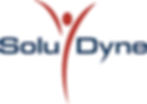
Simple and complete process management, Work Process and Automatic Digitalized Workflow.
APOS - PROCESS MANAGEMENT
Complete Process Management
APOS is used for Process Management on all levels; from Work Processes and Governing Documentation to Digitalization and Process-Automatization.


In APOS, work processes are used as the central framework for distributing responsibility through Roles linked to Job Functions, and disseminating Best Practice in the execution of workflow activities. Additionally, it is a process tool that ensures compliance with external laws and regulations, standards and requirements.
Supports Work Processes
Simplifying tasks with smart solutions and automatization
Smart tools and automatization to make it easy to change, manage and and maintain system content.


APOS has been developed with focus on Best Practice and Roles, to ensure that modern governance principles remain integral. One aspect especially focused on, is that all employees can participate in, and feel ownership of, the Company’s Best Practice.
Enables companies to develop and operate according to Best Practice
APOS is a transparent system to visualize, manage, control and ensure compliance with processes.
Work processes as documentation, are used as the central framework for distributing responsibility through Roles linked to Job Functions,
and disseminating Best Practice in the execution of workflow activities.
Work Processes with Roles
Digitalize and automate your relevant business processes with workflows and forms.
Case Management, Time-managed tasks, Forms.
Map and automate any flow or fixed task as to enforce correct quality, enforce compliance and create audit trail.
Workflow Automation
Governing Elements
Manage and Visualize governing elements ensuring compliance with external laws and regulations, standards and business requirements.
Governing Elements include clearly defined Values, Requirements, Best Practices, Local Amendments, Competence Requirements and Governing Definitions.
Form Designer
Design customized forms integrated with your automated workflows.
Model to Execute

Model to Understand & Use

APOS Process Management

Work Processes vs Workflow Automation - the difference
A Work Process used as governing documentation - is a non automated process view illustrating a number of steps to be taken in order to achieve a specific result. A work process clearly defines roles and responsibilities and are ideally combined with governing elements in order for employees to have a clear understanding of the task to be performed and the requirements and risks involved if any. Work Processes are generally used to replace complicated procedures written as documents where the risk of human error is evaluated to be relevant. Many modern organizations manage their whole operation using Work Processes as this ensures higher control and efficiency.
In conclusion a Work Process in this context means Governing Documentation - defining how work is to be performed.
Work Flow is an automated Process assisting with performing the actual task. For example reporting of deviations can be considered an automated process.
APOS supports the organization in crystalizing activites, roles and responsibilities for the employees, minimizing time spent understanding what to do and what to comply with.
APOS supports processes and content in multiple languages in one structure.
Multi-Language Support
Integrated Modelling Tool
The modelling tool is integrated in the web browser.
Versioning and Audit Trail
Tracks all changes and keeps a complete audit trail.
Form Designer
Design customized forms integrated with your automated workflows.
Governing Elements
Manage and Visualize governing elements ensuring compliance.
Automation
Report and get status overview from mobile device. Includes Offline Reporting Functionality.
Features and Benefits:
Easy access to relevant processes for all employees
Automatic notification to relevant employees on updating
Flexible editing, approval and publication flow.
The possibility of creating and editing processes directly in the browser.
Receipt for reading processes.
Automatic notification when processes are to be updated.
Automatic generation of cross-reference list for ISO standards etc.
Full traceability and history on all processes.
Strong search function.

The APOS Method: Model to Understand & Use
APOS is an acronym for Advanced Process Oriented Steering, which describes the method of enabling a company to develop and operate according to Best Practice. APOS is the name of both the Method and the System.
External Requirements
Laws, Rules and Standards
Internal
Requirements Values
Strategies and Corporate Requirements
Focus on Best Practice
Those who have developed and created APOS have done so with the focus on Best Practice and Roles, to ensure that modern governance principles remain integral. One aspect especially focused on, is that all employees can participate in, and feel ownership of, the Company’s Best Practice.
Based on Work Processes
In APOS, work processes are used as the central framework for distributing responsibility through Roles linked to Job Functions, and disseminating Best Practice in the execution of workflow activities. Additionally, it is a process tool that ensures compliance with external laws and regulations, standards and requirements.
Business Process Orientation
The degree of process orientation is critical to whether a company can claim to be process oriented. A company is not process oriented only by drawing a picture of their processes.
APOS is a transparent system with real opportunities to visualize, manage, control and ensure compliance with processes. It provides a method that permits a company to develop and operate on Best Practice. An Organization's degree of goal achievement will increase by working effectively with work processes.
Define Processes
Define Governing Documentation
Map Competence
Role vs Job Function
Organization and Employees

Competence Requirements
Work Processes: Activities description, responsibilities, requirements, best practice, checklists and risks


Roles and Responsibilities
Compliance with laws, rules and standards

